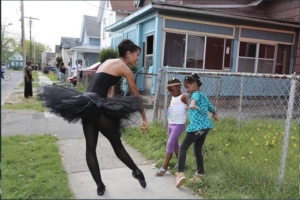Spring Concert Blog Series: Aesha Ash
2019’S SPRING CONCERT
In preparation for our Spring Concert on April 6th and 7th, we’ve chosen the graceful Aesha Ash as the next artist of the 1980s to present to spotlight.
ARTIST DESCRIPTION
Aesha Ash started dancing at the age of 5 years old in Rochester, NY because her older sister wanted to dance. Her sister moved on to cheerleading, but Aesha fell in love with jazz and tap, dreaming of performing on Broadway. As she got older, she excelled in competitions, but they caused her a lot of anxiety. When she decided to move away from competing, she found her love for ballet.
That love, however, came with the pain of both overt and implicit expressions of racism. Aesha was a black girl in the predominantly white world of ballet in a suburban area, which made her a target for ridicule. At the age of 14, she moved to New York City to dance at the School of American Ballet which led to her entry to the New York City Ballet. While dancing with them, her father and sister both died of cancer.

Aesha Ash posing for the Swan Dreams Project.
BODY OF WORK

Aesha Ash showing girls in her hometown of Rochester her pointe.
Aesha Ash showing girls in her hometown of Rochester her pointe.
Aesha attended the School of American Ballet, then was corps de ballet in the New York City Ballet. She then went on to become a soloist with the Béjart Ballet in Switzerland for two years before returning to the US, joining the Alonzo King LINES Ballet in San Francisco. She performed with Alonzo King LINES Ballet for three years until her retirement in 2008. Over the course of her dance career, she had a documentary made about her and performed as a dance double in feature films.
IMPACT
After her retirement from dancing, Aesha wanted to use her platform to expose young African American girls to ballet. She did so by creating the Swan Dreams Project, a photography series of Ash dancing in low-income neighborhoods and the reactions of locals. According to the Swan Dreams Project’s mission, “Through the use of imagery and my career as a ballet dancer, I want to help change the demoralized, objectified and caricatured images of African-American women by showing the world that beauty is not reserved for any particular race or socio-economic background.” In response to the adversity she faced in the ballet world as a black young woman, the Swan Dreams Project was created to challenge the stereotype of what a ballet dancer looks like.
For more information about TAYB’s Annual Spring Concert click here.


